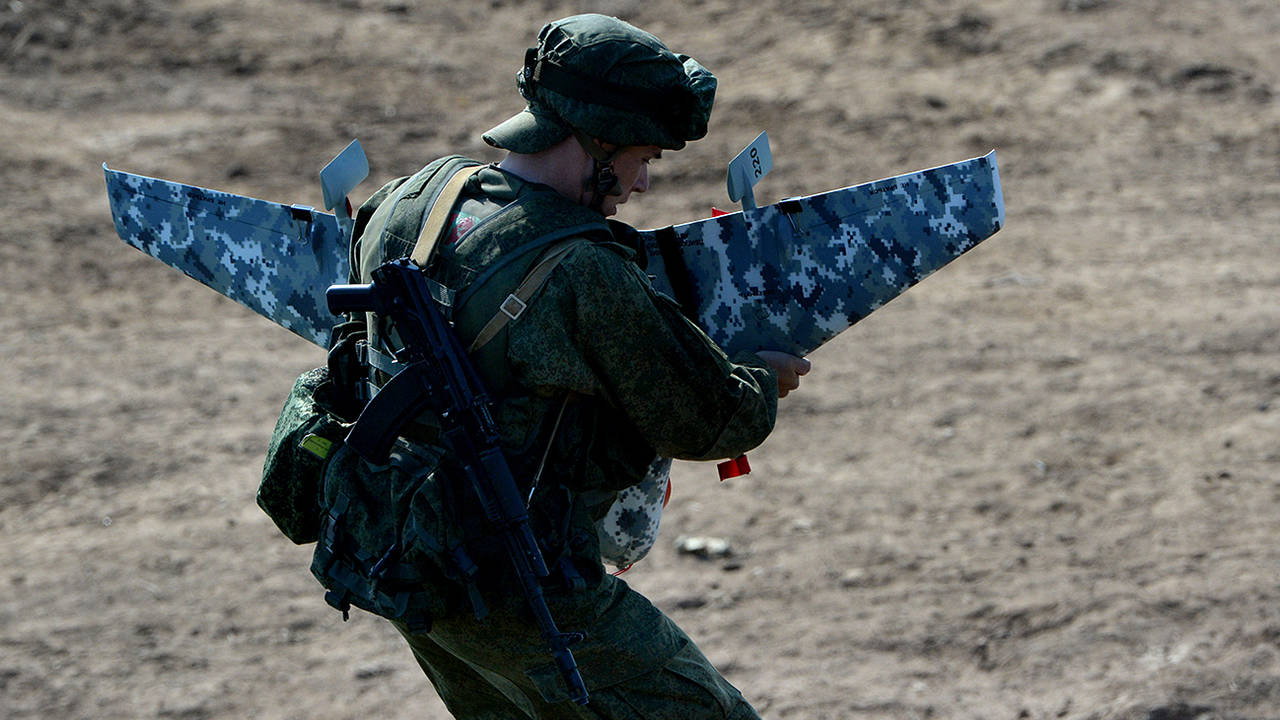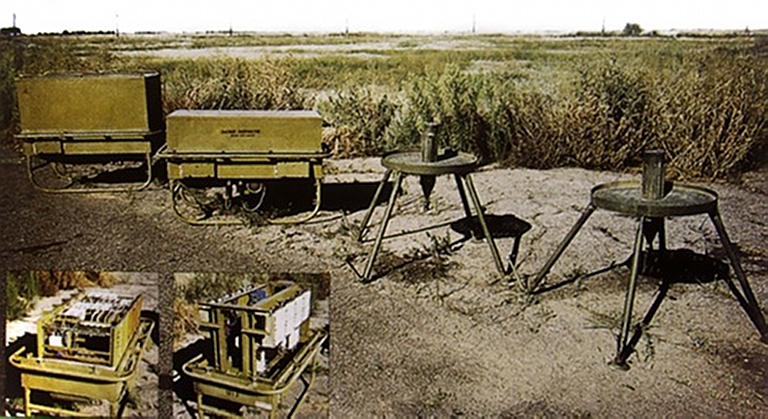Video Simulation Of Russian Defence Against Deadly US Arsenal
A simulation video that shows the powerful defence systems of the soviets and their counter mechanisms against any Possible US attacks.

The annual defence budget of Russia is $47 billion, which is 3.9% of their GDP, Population- 143 million out of which 47 million are fit for service, 766,000 active frontline personnel, 2.5 million active reserve personnel.
Tanks- 8800
Armored Fighting Vehicles(AFV)- 31300
Source = "Top Breaking News"
3M-54KE

The Russian 3M-54 Kalibr and 3M-14 (Biryuza, Turquoise) (NATO code name SS-N-27 Sizzler) are Russian surface ship and submarine-launched anti-ship and coastal anti ship (AShM) and land attack cruise missiles (LACM) developed by the Novator Design Bureau (OKB-8).
3M-14KE
The SS-N-30 (3M-14 Kalibr) is a Russian land attack cruise missile (LACM), and improved version of the 3M-14E “Club” LACM. The SS-N-30A has an estimated range of around 1,500 to 2,500 km and has become a mainstay in the Russian Navy’s ground-strike capabilities.
KH 35UE

The Zvezda Kh-35U 'Kayak' is the jet-launched version of a Russian subsonic cruise anti-ship missile. The same missile can also be launched from helicopters, surface ships and coastal defence batteries with the help of a rocket booster, in which case it is known as Uran ('Uranus', SS-N-25 'Switchblade', GRAU 3M24) or Bal ('Ball', SSC-6 'Sennight', GRAU 3K60). It is designed to attack vessels up to 5,000 tonnes.
Unmanned Aerial Vehicle (UAV)

The T-16 has a take-off weight of around 20 kg. The airframe is a twin-tail canard configuration (meaning a small forewing sits in front of the main wing), and the backswept wing is fitted with leading-edge strake (which control air flow) and downward-facing winglets. A single propeller is driven by a low-noise accumulator, or fuel cell-powered electric motor.
Protivnik-GE 3D Radar

The Protivnik-GE mobile 3D surveillance radar with a digital phased array and digital space-time signal processing is designed to automatically (semi-automatically) detect, position, and track strategic and tactical aircraft, cruise missiles, ballistic targets, small-size low-speed aerial vehicles, classify targets, conduct identification friend-or-foe interrogation, locate active jammers, as well as to generate radar data for direction of fighter aircraft and designation data for surface-to-air missile systems when operating as part of automated Air Defence and Air Force command & control systems.
Triumph ADMS Combat Control Post & Radar System

The S-400 Triumph (NATO reporting name: SA-21 Growler) is an air defence missile system developed by Almaz Central Design Bureau of Russia. The new system replaced the S-300P and S-200 air defence systems of the Russian Army.
The system can engage all types of aerial targets including aircraft, unmanned aerial vehicles (UAV), and ballistic and cruise missiles within the range of 400 km, at an altitude of up to 30 km.
The S-400 Triumph air defence system integrates a multifunction radar, autonomous detection and targeting systems, anti-aircraft missile systems, launchers, and command and control centre. It is capable of firing three types of missiles to create a layered defence.
BUK-M2E ADMS Command Post/Target Acquisition Radar/Self-Propelled Firing

The Buk missile system is a family of self-propelled, medium-range surface-to-air missile systems developed by the Soviet Union and its successor state, the Russian Federation, and designed to counter cruise missiles, smart bombs, fixed- and rotary-wing aircraft, and unmanned aerial vehicles.
Gazetchik-E Radar Protection Equipment

The Gazetchik-E equipment is intended to protect friendly radars against anti radar missiles (ARM) by a momentary interruption of their emissions on command from a stand-alone ARM detector, by using distraction devices and by jamming ARMs lilted with IR, TV and radar homing heads.
The Gazetchik equipment comprises the following components:
- Stand-alone detector;
- Distraction devices using the frequency band of the radar to be protected;
- Aerosol and chaff dispensers;
- Interface with radars under protection.
TOR-M2E ADMS

The Tor missile system is an all-weather low to medium altitude, short-range surface-to-air missile system designed for engaging airplanes, helicopters, cruise missiles, precision guided munitions, unmanned aerial vehicles and short-range ballistic threats (Anti-Munitions).
SHTIL-1 ADMC Shipborne Multi Channel Medium-Range Complex

The Shtil-1 shipborne multi-channel medium-range air defence missile system (ADMS) is designed to provide all-round collective protection of naval groups and ship convoys, as well as individual protection of carrier ships from attacks of anti-ship missiles, aircraft, helicopters, boats and vessels.
Club-S Integrated Missile System

High-performance submarine-based Club-S and ship-based Club-N integrated missile systems are designed to engage surface ships and submarines in conditions of intense enemy fire and electronic countermeasures. Both systems employ unified combat assets – two types of anti-ship cruise missiles and an anti-submarine ballistic missile. Club-N missile system features standardized launch units and transport-launch containers.
Russia’s Show Of Anti-Ballistic Missiles Defence In Syria

On 3 September 2013 Washington and Paris decided to start bombing Syria. Unexpectedly, missiles were launched from one of the NATO's bases in Italy, which were intercepted by a Russian radar and downed by the Russian destroyer. The missiles belonged to anti-aircraft warfare - missiles against missiles. They were launched to check and uncover radar defence of the Syrian territory. According to data of the military intelligence, the aim was to detect radars in the territory of Syria. And the Russian navy managed to intercept those missiles.
The Syrian bases were not uncovered, at the same time the Russians prove their power, having put the shield. So, due to this crisis, the Russian General Staff made use of the situation in order to explain that they're aware of the plans, of the French, US General Staffs in particular - to attack the Syrian territory.
Popular Posts
What Is Trypophobia – A Disgust More Than Fear
"I can't really face small, irregularly or asymmetrically placed holes, they make me like, throw up in my mouth, cry a little bi...
Chandan Roy
16 Interesting Facts About Ambidextrous People
A lefty or left-handed uses his left hand more naturally and dominantly than the right hand. And the righty or right-handed is o...
Ethan Stephans
20 Interesting Facts About Meteoroid, Meteor and Meteorite
Watching celestial objects is a true delight. It is still fun to catch a sight of shooting stars when we grow up. A second of th...
Swati Bhandari








